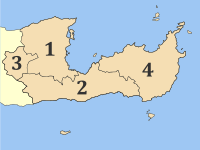Please tell us which country and city you'd like to see the weather in.

Plaka, Lasithi
Plaka is a village in Lasithi, Crete. It is part of the community Vrouchas, in the municipal unit Agios Nikolaos. It neighbours the town of Elounda and is close to the historical island of Spinalonga. In the vicinity are the ancient cities (now in ruins) of Olous and Lato, which Dorian settlements were frequently in conflict with each other over territory disputes. Tourist boats depart from Plaka to Spinalonga on a daily basis. The one way boat passage requires approximately ten minutes.
Coordinates: 35°17′56″N 25°43′41″E / 35.299°N 25.728°E / 35.299; 25.728

Plaka
Pláka (Greek: Πλάκα) is the old historical neighbourhood of Athens, clustered around the northern and eastern slopes of the Acropolis, and incorporating labyrinthine streets and neoclassical architecture. Plaka is built on top of the residential areas of the ancient town of Athens. It is known as the "Neighbourhood of the Gods" due to its proximity to the Acropolis and its many archaeological sites.
Name
The name "Plaka" was not in use until after the Greek War of Independence. Instead, the Athenians of that time referred to the area by various names such as Alikokou, Kontito, Kandili, or by the names of the local churches. The name Plaka became commonly in use in the first years of the rule of King Otto. The origin of the name is uncertain: it has been theorized to come from Arvanite "Pliak Athena", meaning "Old Athens", or from the presence of a "plaque" which once marked its central intersection.
Location
Plaka is on the northeast slope of Acropolis, between Syntagma and Monastiraki square. Adrianou Street (running north and south) is the largest and most central street in Plaka and divides it into two areas: the upper level, - Ano Plaka - located right under the Acropolis and the lower level - Kato Plaka - situated between Syntagma and Monastiraki.
Plaka (disambiguation)
Plaka may refer to several places in Greece:

Lasithi
Lasithi (Greek: Λασίθι) is the easternmost regional unit on the island of Crete, to the east of Heraklion. Its capital is Agios Nikolaos, the other major towns being Ierapetra, Sitia and Neapoli. The mountains include the Dikti in the west and the Thrypti in the east. The Sea of Crete lies to the north and the Libyan Sea to the south.
To the east of the village of Elounda lies the island of Spinalonga, formerly a Venetian fortress and a leper colony. On the foot of Mount Dikti lies the Lasithi Plateau, famous for its windmills. Vai is well known for its datepalm forest.
Thanks to stunning beaches and its mild climate year-long, Lasithi attracts many tourists. Mass tourism is served by places like Vai, Agios Nikolaos and the island of Chrissi. More off-beat tourism can be found in villages on the south coast like Myrtos, Makrys Gialos or Makrigialos, Xerokambos and Koutsouras.
Lasithi is home to a number of ancient remains. Vasiliki, Fournou Korifi, Pyrgos, Zakros and Gournia are ruins of Minoan date, Lato and Itanos were Doric towns.
Radio Stations - Plaka,_Lasithi
SEARCH FOR RADIOS
Podcasts:

